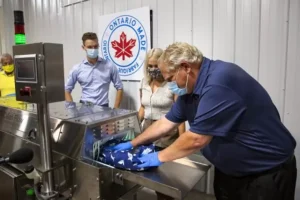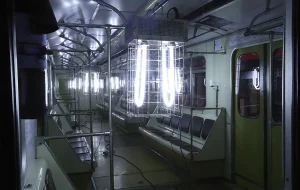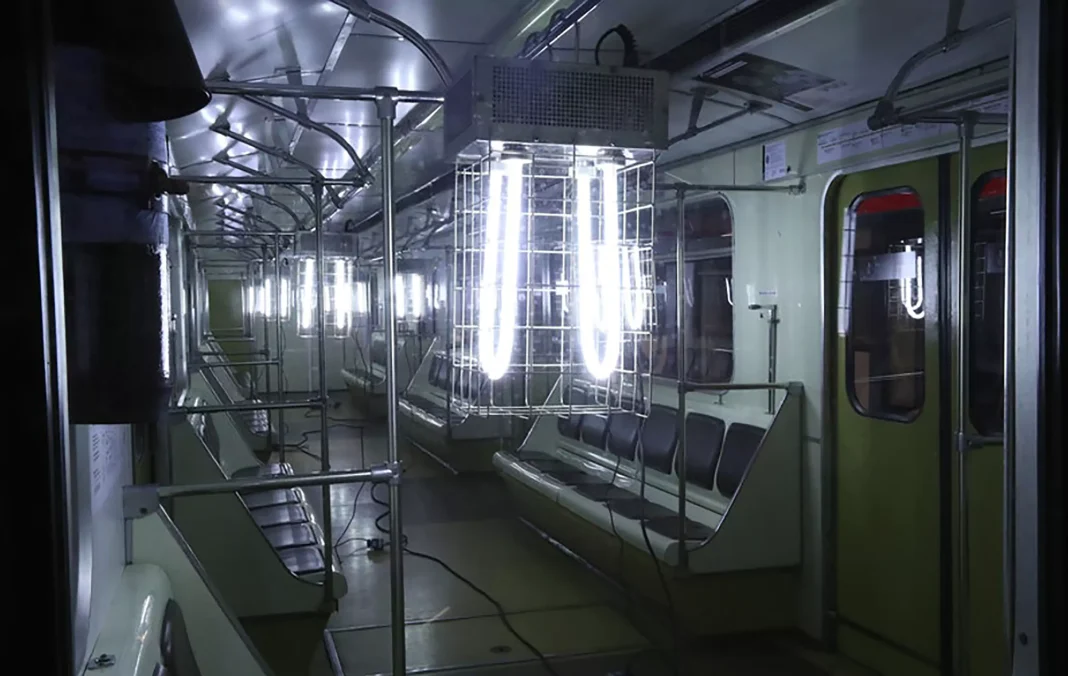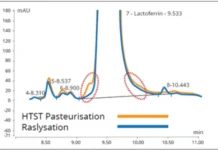Dr. Keith Warriner, CPHAZ, Department of Food Science, University of Guelph, Ontario
The word crisis comes from the Greek “to separate, to sift, to decide.” As crises goes, one could put the COVID-19 pandemic in the Top 10 – number one for the retail and restaurant industry. Both sectors were hit hard by the pandemic and had to quickly adapt to the “new normal” to work within the confines of the lockdown. The restaurant sector brought forward online ordering and curbside pickup, then later in the summer adopted the European style of eating out on patios. Retailers were overwhelmed by panic buying while at the same time experiencing supply management issues, given that the food industry was put on pause. An additional challenge to retailers is that they not only had an increase of foot traffic, but they had to be seen to protect customers along with workers.
There was no pandemic playbook to go by, and many in the food industry looked to the Public Health Department for direction, which was having a crisis of its own on how to manage the unfolding events. Consequently, a range of increasingly strict measures were implemented from a ban on reusable bags to navigating the one-way system of the pasta isle. There was little scientific evidence to support many of the procedures introduced, and Public Health was a source of conflicting information. Nevertheless, it was soon realized that introducing policy and procedures was easier compared to removing them. The summer saw a decline of new cases that gave retailers and restaurants time to think of long-term strategies.
Among the common measures of hand washing, mask wearing and social distancing, is there a role for UV-based technologies? The industry certainly observed some interesting UV-based interventions arising during the pandemic as companies – some legitimate but others opportunist – attempted to provide solutions. These ranged from robots harnessed with UV-C lamps to UV-wands that could be used for spot disinfection. In many instances there was no data to prove efficacy or safety protocols for application and maintenance. The customers in retail and restaurants asked few questions, given the crisis for finding interventions to ensure their businesses would survive.
After the initial panic, more rational interventions were sought in an attempt to look at long term strategies that could benefit beyond the pandemic and, at the very least, prepare better for the next.
Revive the campaign against single-use plastics

Early in the pandemic there was an immediate ban on reusable bags, despite having no evidence that people could catch COVID-19 from reusable bags. The net result was to return to the plastic bag that everyone knows is bad for the environment and went against the philosophy of sustainability. By making a hasty decision, retailers are now not in position for ways to welcome back reusable bags. The answer is to provide customers a service for decontaminating bags and bins in a visual way but without needing to queue for an excessive time. In this regard, a UV-C-based technology that was adapted to rapidly decontaminate N95 masks would be an ideal application. The technology is based on generating hydroxyl-radicals from the UV-C degradation of hydrogen peroxide. In one example, the items to be decontaminated are passed through a conveyer where hydrogen peroxide mist is introduced with simultaneous exposure to UV-C for 30 seconds (Figure 1). Critically, the technology can penetrate shaded areas inaccessible to UV-C, thereby enabling disinfection of a broad range of items.
In-store decontamination of foods and packaging
Early in the pandemic there was a focus on the conveyance of SARS-CoV-2 on packaging and foods, with the Chinese adding fuel to the fire by reporting positive tests on chicken in addition to seafood. A viral YouTube video suggested washing packaging and fresh produce in soap or leaving groceries outside for 72 hours, waiting for the virus to die off. Although many raccoons were grateful, it was clear at the time, and subsequently emerged, that transmission of viruses from surfaces is low. Yet, UV tunnels were installed at retailers whereby foods and packages were passed through; although, it was evident there was no consideration for safety in relation to user exposure to UV-C light. The safety limit of UV-C for eight hours is 6 mJ/cm2, which is equivalent to 10 minutes in the sunlight with a UV index of 10. On this basis, there are benefits to UV-C disinfection for inactivating common pathogens encountered on fresh produce and other foods, but safety standards need to be met.
UV-C wands

Within the pandemic, the market was flooded with domestic UV-C wands or other personal disinfection units. The majority of UV devices (especially those based on LEDs) are likely to be UV-A (400 nm) that exhibit negligible antimicrobial activity. Other devices based on UV-C lamps are likely to be low powered (2 mW/cm2), which requires extended exposure times of 10 min to have any impact. However, in many instances the manufacturer would suggest it can be waved over an area to magically make the surface sterile. Although such devices are relatively harmless, a concern is that when users encounter industrial-standard devices they may have the same casual manner, thereby causing negative health effects. It is estimated that UV wands must deliver a dose of 20 to 100 mJ/cm2 to support adequate microbial reductions, thereby requiring relatively high UV intensity. To use these devices, there is a need to wear protective equipment such as gloves, full coverage clothing and eye protection to avoid contact with skin and eyes (Figure 2).
Room and other enclosed spaces disinfection

The disinfection of rooms using UV-C has been widely practiced within hospital surgery rooms, where high-intensity UV is applied when unoccupied. During the pandemic, similar systems were applied in restaurants, subway carriages and airline carriages (Figure 3). However, there were misconceptions on how to apply the UV-C technologies and, more importantly, how to do so safely. Within hospital applications the UV-C is used in combination with titanium dioxide paints that generate antimicrobial radicals to enable shaded areas to be decontaminated. With applications in non-hospital settings, the degree of shading limits the efficacy of UV-C, giving a false sense of decontaminating efficacy. In addition, those applying UV-C have a perception of long-lasting effects after treatment when there are no residual antimicrobial effects. On occasion, users of high-intensity UV would apply the units when the rooms were occupied, leading to exposure risk. This was evident by an incident in the Philippines where 10 people suffered the effects of UV-C exposure during a demonstration of UV-C units in action.
Air disinfection and filtration
In the early days of the pandemic the airborne route of virus transmission was dismissed to avoid panic buying of masks that were needed by frontline workers. However, by June there was an abrupt U-turn by Public Health to recommend the use of masks, even simple cloth masks. By September, mask wearing become widespread and a focal point of contention.
With the acknowledgement of airborne transmission of the virus, there was a shift away from surface sanitation to the air. In the summer months the promotion of outdoor activities and eating on patios was promoted. There was even talk of holding classes outside when students returned to schools.
Although there is frequent reference of the SARS-CoV-2 being a novel virus, the reality is that air disinfection has a long history of use, with the first systems being introduced in 1938 for controlling tuberculosis. Within the air disinfection sector, the efficacy of systems is assessed based on Air-Changes-per Hour (ACH).
For hospitals, the ACH ranges from six to 12. Simply recirculating the air is insufficient and will likely result in enhanced dissemination of the virus. Therefore, HEPA filters are incorporated that should have sufficient filtration efficacy to capture the virus. The efficacy of HEPA filters is measured in MERV. Hospital systems use filters with 13 to 18 MERV. As one can imagine, the power requirement to move and filter air is high, and that is correspondingly expensive. Domestic HEPA or induct UV lamps are considered an alternative, although the AHL is equivalent to two ACH.
In comparison, an upper room UV system combined with low ceiling fans can support an AHL of up to 24. An upper room UV system can treat air above 2.1 meters. Hence the need for air management systems, such as fans. As with all UV disinfection systems, the UV must be correctly fitted to minimize light straying to the floor. This is achieved through guards that ensure light is directed horizontally and upwards. It also is important that maintenance staff are properly trained to install and maintain the lamps.
The most common light sources for upper-level UV treatment are low-pressure mercury lamps emitting at 254 nm. An estimated intensity of 17 mW/m3 is satisfactory to decontaminate air, provided it is combined with adequate circulation via fans that draw the air upwards.
There are systems based on Far-UV (222 nm) that have been installed directly above enclosed areas. It is reasoned that the shorter wavelengths are less penetrating in air and lack the energy to penetrate eyes or skin. However, there are concerns of the longer wavelengths being emitted that includes UV-C. Of greater concern is the use of pulsed xenon UV lamps for air disinfection, especially with roaming robots, where exposure of people in close proximity represents an unacceptable risk.
To a bright future
The SARS-CoV-2 pandemic hit the retail and restaurant sectors hard, forcing a pivot to take control of the new reality. If there is a silver lining, it is that the pandemic accelerated the introduction of infection control technologies that had hitherto been considered nonessential in the sector. In the time of crisis, it was encouraging to see UV-based technologies come to the fore, even though many systems introduced were ineffective or hazardous. In the course of the second wave, it can be anticipated that the science will prevail in a post-COVID-19 world, with benefits extending into the future.
Contact: Dr. Keith Warriner, kwarrine@uoguelph.ca






